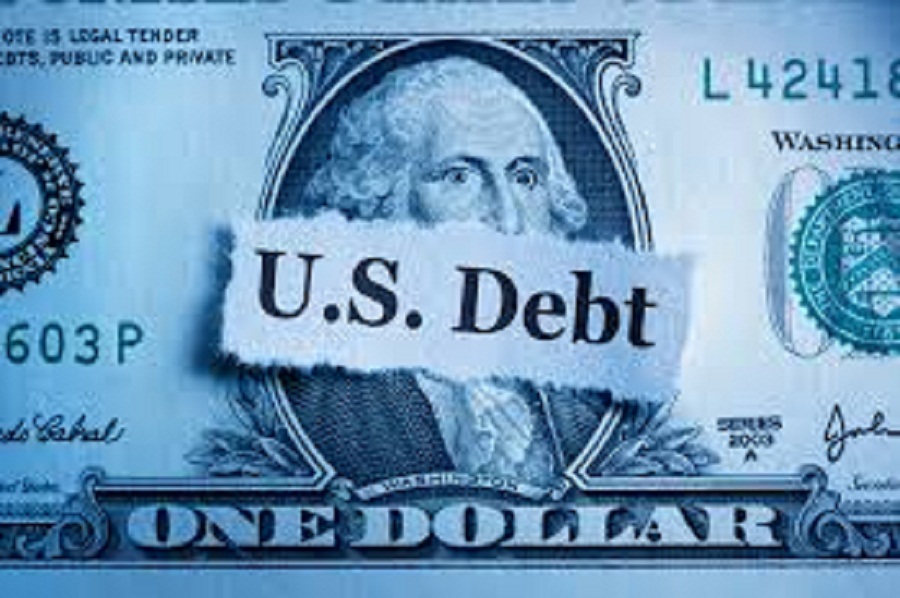Is the US external debt serious?
There are other reasons why external debt is not seen as serious as domestic government debt.

Does the US Administration’s trade policy get a bad press? Undoubtedly, the answer is ‘yes’. It is panned from all directions, not least amongst economists. These are the same economists that decry mountainous US federal debt but disregard the similarly mountainous external debt that the Trump Administration is trying to curtail with its – admittedly – aggressive tariff policy.
General speaking, debt is good; but too much debt is bad. Debt is good because it allows us to smooth payments and hence be able to afford things now as opposed to saving up for them. Most people can afford to buy their homes in their 20s or 30s because they utilise mortgages. If they did not they might have to wait until their 50s or 60s. But too much debt leads to concern that it cannot be re-paid. And so it is for a country; both in terms of the debt taken on by the government and the debt taken on externally.
In the US, the debate has always been about government debt, which sits at around USD36tr; not the USD26tr, or so, of external debt. This is due to a number of reasons. The first is clearly that government debt is far more visible. If debt is too high individuals and businesses are likely to have to pay for this directly with higher taxes and/or less benefits.
The cost of excessive external debt is less obvious. It might erode the value of currencies but it is not as clear that there’s such a direct cost. In the US, in particular, there’s always the hullabaloo around increasing the debt ceiling, so that the Treasury can accumulate even more debt. There is no such hysteria when the US releases a set of current account data showing that the country is running an annualised deficit of USD1tr, or more. Even since Trump went on his tariff tirade in early April there has been no financial market reaction to the surge in trade deficits as US firms front-run the tariffs. And, if financial markets are not responding you can be sure that the average American is taking no notice either.
There are other reasons why external debt is not seen as serious as domestic government debt. One is that the vast bulk (85%) of this external debt is denominated in dollars. Hence, the debt does not become more burdensome when the dollar goes down. This is different to many other countries, especially in emerging markets, where a notable proportion of external debt is usually in a foreign currency; most often the dollar.
Another reason why the external debt is not frowned upon is that the US has traditionally earned more from its holdings of foreign assets than it has paid out to overseas holders of US assets. That might sound strange given that the US has huge external debt but simply put, the US sells a lot of low-yield ‘safe’ assets like treasuries to the rest of the world, but holds more higher-yielding (unsafe) assets externally. It is a bit like having a loan but being paid interest by the creditor rather than owing them the interest.
As good as that may be, it does seem to be coming to an end as the primary income surpluses on the current account have slipped to become small deficits. Putting this together it does seem that the Trump Administration is right to care about external deficits, even if it chooses to tackle the issue through the sub-optimal path of tariffs. The irony though, is that if it is really concerned about the external deficits the best way to fix it is through controlling ‘internal’ deficits, notably the budget deficit. But it seems that this is not something that the Republicans plan to do.
Does this mean that any attempt to correct external imbalances is doomed to fail? Probably. Is that a bad thing for the US? Probably. However, it is also a bad thing for the rest of the world, for there are signs that the US is seeing its safe-asset status wane. That’s important because, in the past, the rest of the world has seen the fall in the value of its US assets cushioned by dollar strength whenever global financial markets plunge.
However, if the dollar is going to fall when asset prices implode, as we’ve seen recently, foreign investors face a double whammy. That’s not good for them, but it is also not good for the dollar as it makes overseas investors more reticent to keep adding to US indebtedness.








